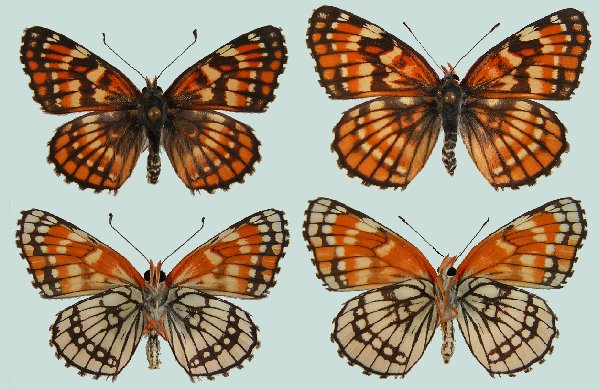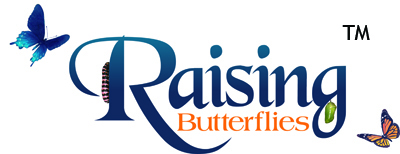Thessalia leanira alma

Photo Life History: Thessalia leanira alma
Habitat: Mountain Canyons; Pinyon Juniper; Desert Hills & Mountains; i.e, Utah's West Desert Mountain Ranges. Males hilltop whereas females fly in association with their host plants.
Host Plants: Castilleja chromosa
Suitable Lab Host Plants: Most any species of paintbrush (Castilleja). Larvae refuse Penstemon.
Caring for Live Female Butterflies: Feed females regularly.
Methods of Female Oviposition: Open Screen Cages; Portable Cages.
How to Find Eggs: Females lay eggs in clutches of app. 8 - 25; depending upon the size and concentration of host plants. Look on the ventral side of leaves towards the lower portion of the host plant.
How to Hatch Eggs: Consolidate eggs into one container.
How to Find Caterpillars in the Field: Finding gregarious pre-diapause larvae can be as random as finding ova. Post-diapause larvae can be found either resting at the base of the host or feeding on host plant flowers. Keep in mind that once you find one post-diapause larva, start looking closer in that general area as post-diapause larvae disperse roughly within 100 feet (or so) from where the pre-diapause larvae fed.
Caterpillar setups: For pre-diapause larvae, I recommend using the open terrariums or open bucket technique. Overcrowding is not generally an issue. For post-diapause larvae, see Post-Hibernation Strategies below.
Larva to Pupa: Caterpillar silks to leaf or twig; creates and attaches cremaster; hanging as a J before pupating.
Number of Broods per Year: 1
Overwintering Stage: Third Instar Larva.
Overwintering Strategies: Your Own Backyard.
Post-Hibernation Strategies: When you feed post-diapause larvae after overwintering, if you're only rearing a few caterpillars, I highly recommend isolating caterpillars from sibling caterpillars using the twin cup method (or similar) in order to avoid re-diapause--an extremely common situation with checkerspots. (See this video for more information on the twin cup method.)
Avoiding Diapause Techniques: Not applicable.
Disease Prevention: Change out host plant and remove frass every two to three days using the twin cup method.
Emergence: Emergence Container
Field Notes:

